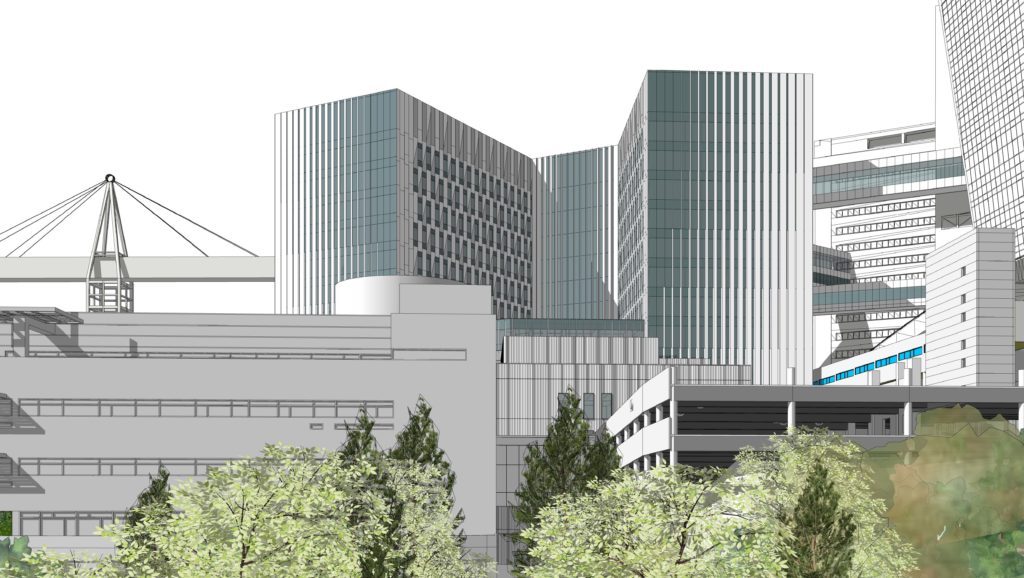
At an initial meeting the Design Commission indicated that plans for the OHSU Hospital Expansion Project require more work to meet city guidelines,* writes the Daily Journal of Commerce.
As work progresses on the Adidas Campus Expansion construction cranes are the latest flashpoint in clash between Adidas and neighbors, reports the Oregonian.
The Oregonian reported that Prosper Portland is asking for proposals to redevelop two properties in Old Town. The NW 4th & Burnside is known for being the former home of Right 2 Dream Too. Block 25 at the north end of Chinatown is currently used as surface parking for NW Natural.
The Skanner spoke to three minority-owned businesses moving into the Alberta Commons development at NE MLK and Alberta.
The Portland Diamond Project is approaching a deadline to “start paying real money to reserve a marine cargo terminal for its billion-dollar baseball park — or give up on building at the site,” reports the Oregonian.
*This article will be unlocked for the rest of this week. After this week it will only be viewable by DJC subscribers.
I’m not sure what planet the Design Commission is on. They want more pedestrian experience on the OHSU expansion? Seriously? They should visit the site! I work up there and Campus Drive is a steep incline and other than commuters who get off the bus and walk up the hill there is no reason for a better pedestrian experience. Do they expect retail and Lululemon to open on the ground floor?
Jo, with such a sizable working-day population now inhabiting Pill Hill, I have hope that a richer, more humane pedestrian experience can be successful. I suspect that it’s not just people in other neighborhoods, but also those staff people and patients in the hospital neighborhood who will welcome a thoughtful, street-level built environment. Terrain can be a challenge, but as vibrant civic places in mountainous regions of old countries (like Turkey, Greece, Italy, Spain, etc.) have shown, humans can accommodate slopes.
cultures are different, we’re talking humans here. Every time designers try to change behaviors they fail.
I support David Benson’s point of view. Snarky, disparaging comments do not contribute any substance to the discussion. Architects should always strive to create more humane, activated ground floors rather than faceless dead zones.
nothing snarky in the comment. If that is how you chose to read it, that is on you. The simple reality is that there are very, very few examples in the US where design that goes against the people’s nature succeed.
billyjo, I actually agree with you that designing against human nature does not work. Where I disagree with you is in what constitutes “human nature.” By most definitions, human nature comprises unchanging, intrinsic characteristics of humans that are the same across cultures and across time. Figuring it out is tough, because human’s have shown such diverse beliefs and behavior, and because it’s so easy to confuse the norms of our time and place with human nature.
I think that it’s possible to activate even some of the steeply-sloped streets in Portland for a number of reasons. First, I see a dramatic generational change in attitudes toward the automobile and housing. Younger Americans seem less auto-centric than their elders, more willing to bike, skate, scoot, ride, and walk; less interested in the wider, often arid, spaces of suburban living, and more interested in the denser, vibrancy of city life. Evidence of this can be seen in the information home buyers now want and in changes in property values. Increasingly, people want to live in places with high walk scores, and thus living in neighborhoods offering these become relatively more expensive than those with low walk scores.
Second, over the past couple of decades more and more of us Americans are seeking opportunities for exercise, including walking up steps and inclines. But while most of us avoid walking barren, concrete, auto-dominate routes, many of us are willing to take on a fairly steep incline if it rewards us. The rewards can be natural, as a hike in the woods, but they can also be urban – note how many people are willing to walk San Franciscan slopes.
And third, our buildings and urban design influences our behavior. As Winston Churchill said, “We shape our buildings, thereafter they shape us.” So, for people living and working near Neighbor’s Corner coffee shop in San Francisco, it seems “natural” to walk up and down hilly streets for a latte and pastry.